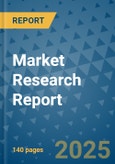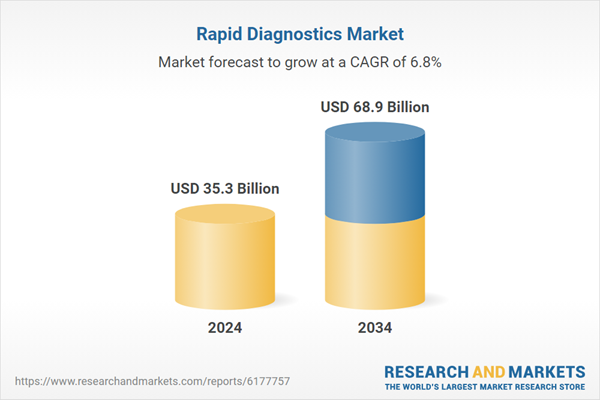The market is expanding due to several factors, including the rising number of infectious diseases, the increasing popularity of point-of-care testing, continuous innovation in diagnostic technologies, and the steady rise in investments aimed at upgrading healthcare infrastructure. Rapid diagnostic tests are designed to deliver accurate results within minutes to a few hours, making them a crucial tool for early detection and prompt medical response. These tests are widely used in clinics, homes, and pharmacies to support real-time healthcare decisions. They use a variety of platforms such as molecular diagnostics, immunoassays, and lateral flow assays to provide timely, dependable results. Advancements in biosensors, microfluidic technology, and AI-based diagnostic tools have further enhanced their speed, accuracy, and utility. Market growth is also supported by broader integration with digital health systems, improving diagnostic efficiency and expanding applications beyond just infection monitoring.
The infectious disease testing segment held a 25.2% share in 2024. The segment continues to lead as the demand for early and rapid detection of illnesses like hepatitis, HIV, tuberculosis, malaria, and influenza remains high worldwide. With growing global health risks and higher transmission rates, early diagnosis has become a top priority. Rapid tests play a key role in identifying these diseases quickly, enabling faster treatment initiation and helping reduce the overall mortality rate.
In 2024, the over-the-counter (OTC) diagnostics segment generated USD 23.1 billion, and it is expected to grow at a CAGR of 7.1% through 2034. Consumers are increasingly prioritizing personal health management, which fuels demand for self-testing kits. The ease of access to digital health resources and marketing efforts promoting home-use diagnostics has significantly increased confidence in using OTC kits. People are embracing these tools for routine monitoring of health conditions like glucose levels, pregnancy, and infections.
U.S. Rapid Diagnostics Market generated USD 16.8 billion in 2024. This growth is supported by the presence of a robust healthcare infrastructure, advanced laboratories, and wide hospital networks across North America. These factors have created a solid foundation for the rapid adoption of cutting-edge diagnostic technologies. Efficient lab systems also allow for quick rollout and scaling of diagnostic tools, contributing to the strong uptake of rapid testing in the region.
Notable companies shaping the competitive landscape of the Global Rapid Diagnostics Market include Trinity Biotech, Abbott, Quidel, Thermo Fisher Scientific, Roche, Sight Diagnostics, ACON, BIOMÉRIEUX, Alfa Scientific, Meridian Bioscience, Becton, Dickinson and Company (BD), QIAGEN, Artron, Hologic, BIO-RAD, and Danaher. To gain a stronger position, companies within the rapid diagnostics industry are pursuing aggressive strategies focused on technological innovation and global reach. Many are channeling significant investment into research and development to create highly accurate, faster, and user-friendly test kits. Strategic collaborations with healthcare providers and distribution partners allow these firms to expand into emerging markets. Additionally, firms are adopting digital integration and AI-driven platforms to enhance test interpretation and result management.
Comprehensive Market Analysis and Forecast
- Industry trends, key growth drivers, challenges, future opportunities, and regulatory landscape
- Competitive landscape with Porter’s Five Forces and PESTEL analysis
- Market size, segmentation, and regional forecasts
- In-depth company profiles, business strategies, financial insights, and SWOT analysis
This product will be delivered within 2-4 business days.
Table of Contents
Companies Mentioned
The companies profiled in this Rapid Diagnostics market report include:- Abbott
- ACON
- Alfa Scientific
- Artron
- Becton, Dickinson and Company (BD)
- BIOMÉRIEUX
- BIO-RAD
- Danaher
- HOLOGIC
- Meridian Bioscience
- QIAGEN
- Quidel
- Roche
- Sight Diagnostics
- Thermo Fisher Scientific
- Trinity Biotech
Table Information
| Report Attribute | Details |
|---|---|
| No. of Pages | 140 |
| Published | September 2025 |
| Forecast Period | 2024 - 2034 |
| Estimated Market Value ( USD | $ 35.3 Billion |
| Forecasted Market Value ( USD | $ 68.9 Billion |
| Compound Annual Growth Rate | 6.8% |
| Regions Covered | Global |
| No. of Companies Mentioned | 17 |









